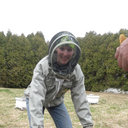Spinal procaine with and without epinephrine and its relation to transient radicular irritation.
Keywords
Abstract
OBJECTIVE
To document the clinical characteristics of procaine with or without the addition of epinephrine.
METHODS
In this randomized, prospective, double blind study, 62 patients received spinal anesthesia with 100 mg procaine and either 0.3 mg epinephrine (EPI group) or 0.3 ml NaCl 0.9% (SALINE group). Sensory anesthesia to needle prick was evaluated q 1 min for 10 min, q 3 min for 33 min and q 5 min until regression to L4. Motor block was assessed with the Bromage scale. Patients were questioned, by telephone, for transient radicular irritation (TRI) 48 hr later.
RESULTS
Time to reach highest sensory level and number of segments blocked showed no difference. Mean time for regression of the sensory level to T10 was longer in EPI (83 +/- 23 vs 66 +/- 20 min, P < 0.01). Time to recuperate to full flexion of knees and feet (Bromage 4) was longer in EPI (126 +/- 37 vs 100 +/- 30 min, P < 0.01). Patients in EPI received more ephedrine. Eighteen patients had nausea (15 EPI/3 SALINE, P < 0.0015). One patient had TRI, incidence: 1.67%, 95% CI (< 1%-9%).
CONCLUSIONS
Spinal procaine is appropriate for surgery of short duration. Epinephrine prolongs sensory and motor blocks by 25%. However, it is associated with a high incidence of nausea.


